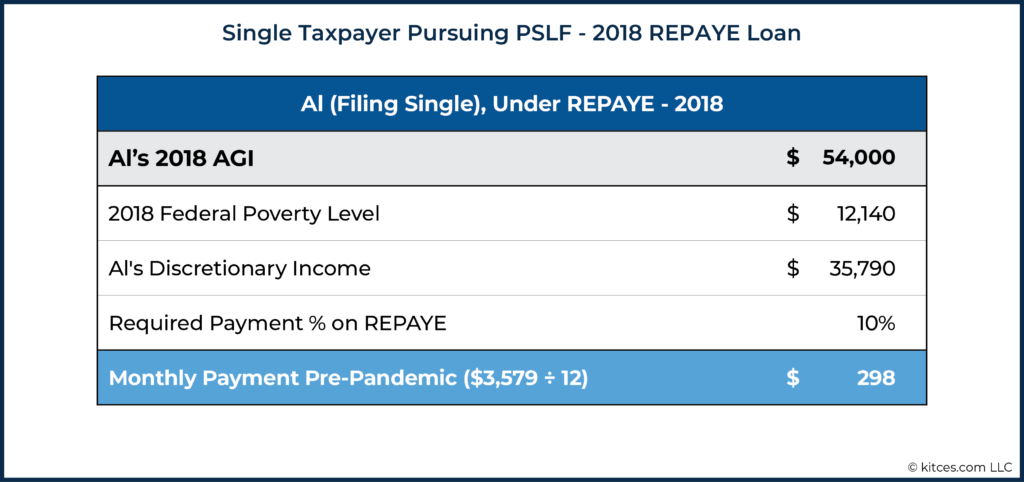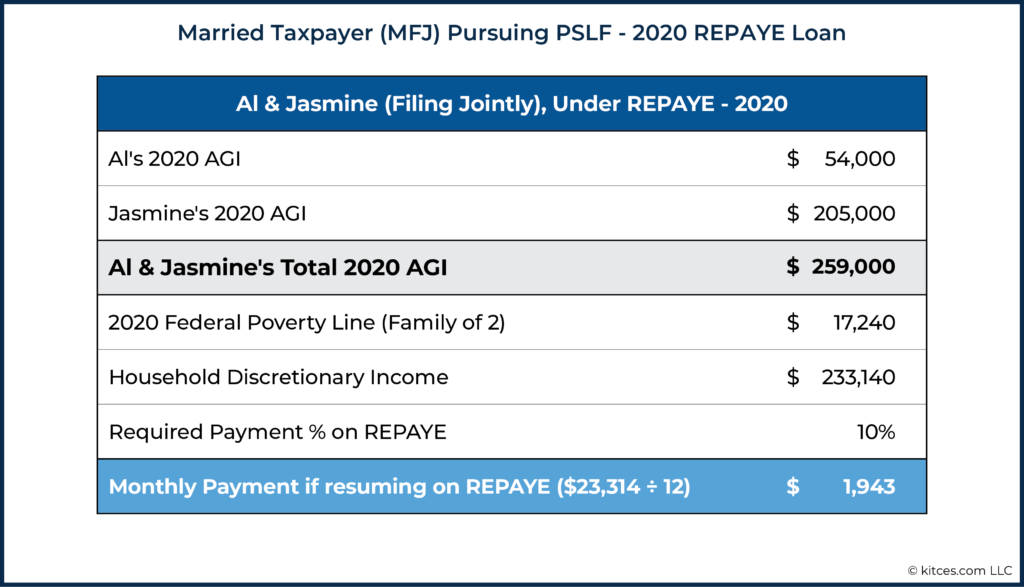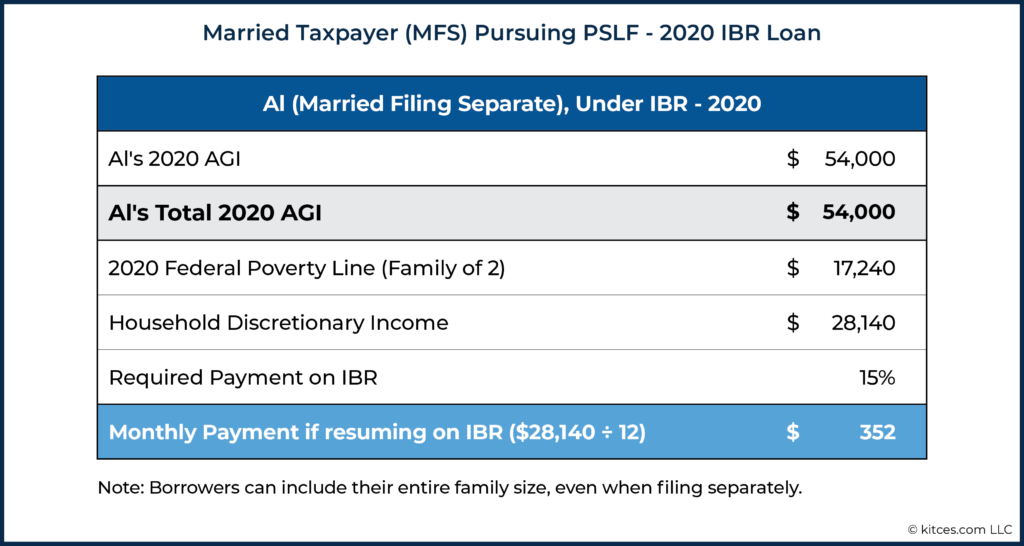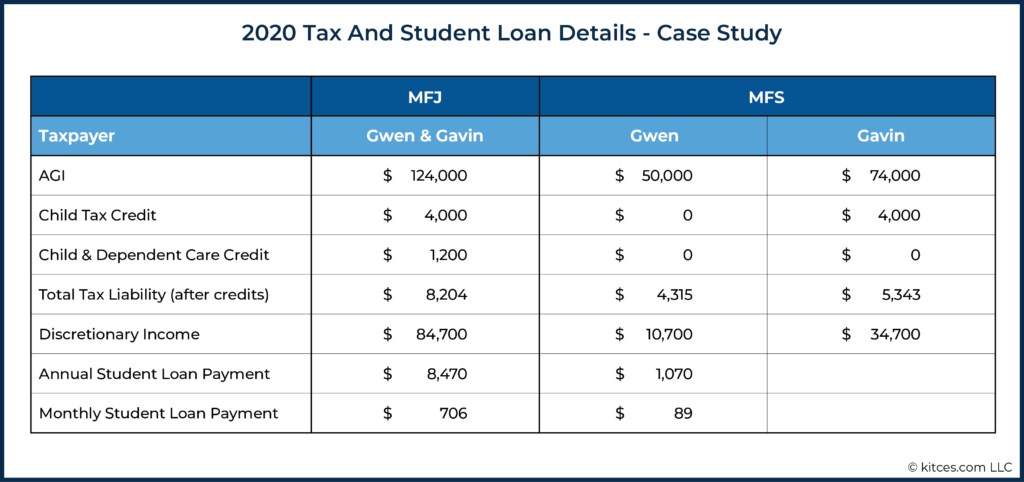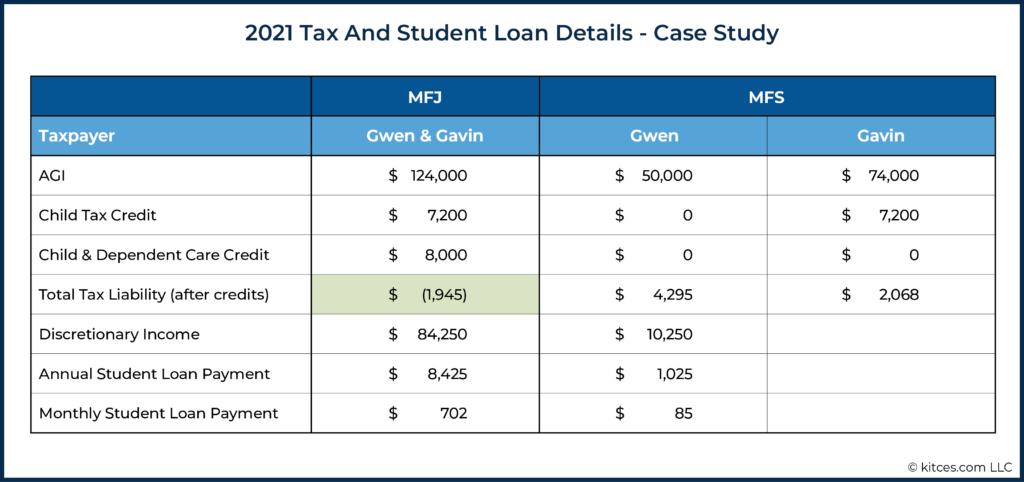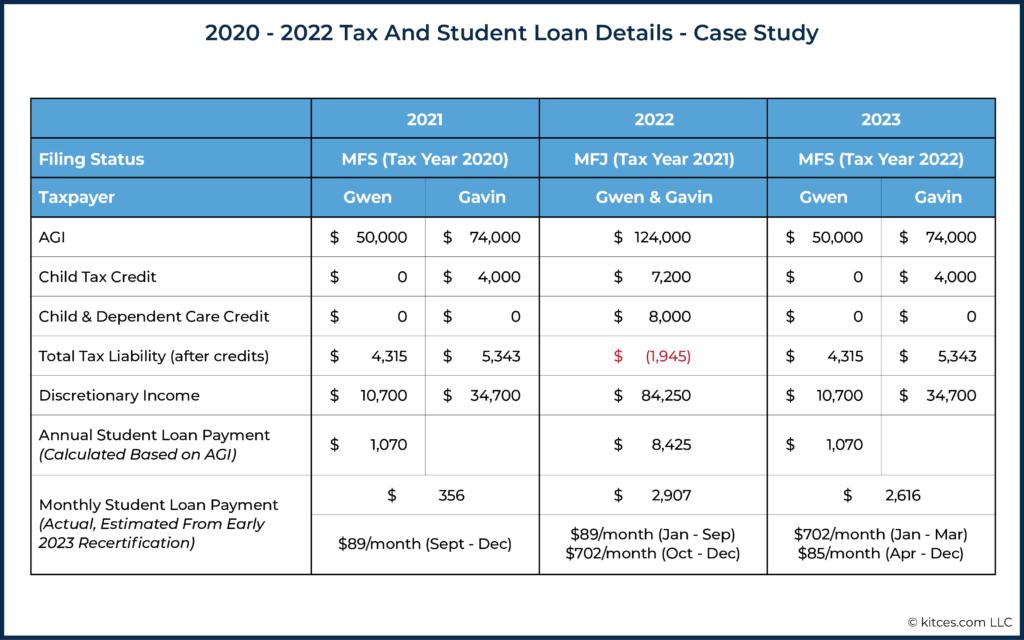Executive Summary
Beginning on March 20, 2020, most Federal student loan borrowers were given a break from having to make student loan payments, with interest rates set to 0% and no payments required. This policy began as an Executive Order, was then included in the CARES Act, and was repeatedly extended by both the Trump Administration and the Biden Administration. However, the payment and interest freeze is scheduled to sunset on September 30, 2021, and millions of borrowers will once again be required to make monthly student loan payments.
The resumption of student loan payments will be a significant change for many borrowers’ finances. It not only impacts cash flow but may also impact their preferred tax filing status, where they choose to keep their retirement savings, etc. In addition, many borrowers have had significant changes, both positive and negative, in their financial lives since the payment freeze began, so the best strategy to pursue after the repayment freeze ends may very well have changed. And with the resumption of payments for so many borrowers happening all at once, getting a plan in place and implemented well ahead of the September 30 end date is vital.
Borrowers on Income Driven Repayment (IDR) plans have many planning opportunities to consider. Both the timing of their income certification and their 2021 tax filing status could be set up strategically to minimize student loan payments. Especially since the popular strategy of Married Filing Separately to minimize payments may no longer be as appealing for families with young children, due to the American Rescue Plan’s changes to the Child Tax and Dependent Care Credits for 2021 (which are reduced or lost altogether for couples who file separately, and which have become fully refundable).
In addition, borrowers who may previously have been pursuing forgiveness strategies (e.g., deliberately minimizing payments to maximize their loan balance in anticipation of future Public Service Loan Forgiveness or IDR forgiveness) may now be able to pay their loans to $0, while others may have had a career change that makes them eligible for forgiveness programs they previously did not have access to. Borrowers should not assume that the student loan plans they had pre-pandemic still apply, and advisors can play a key role in helping them think about the moving pieces and how best to manage the tradeoffs involved.
Broad student loan cancellation of some amount has also gone from being a ‘pipe dream’ to having realistic odds of passing in the coming months. While this is far from certain, and many of the policy details are still unresolved, it is on the minds of many borrowers who don’t exactly want to accelerate debt repayment only to find out it would have been forgiven by waiting just a few months. For some borrowers, this may mean making at least a small bet on forgiveness, opting to pay some interest now in hopes of forgiveness, even if they have the cash to pay off their loans in one lump sum today. Other borrowers may decide to just wipe out their loans with the cash they’ve saved during the pandemic, simply to eliminate the debt (and its future interest and payment obligations).
Ultimately, though, the key point is simply that with tens of millions of student loan borrowers due to ‘suddenly’ begin repayments in October, a flood of service requests is likely to come soon to loan servicers. Which means those who are considering potential changes to their student loan strategies, from altering their tax filing status to accelerating (or not) their income recertification, need to be evaluating their plans now, including a consideration of how those plans might be adjusted if at least some level of student loan forgiveness does, in fact, come to pass!
***Editor’s note: At the time of writing, the student loan payment freeze expired on September 30, 2021. On August 8, 2021, the Education Department extended the student loan payment freeze to January 31, 2022. Borrowers will be required to make payments in February of 2022. Notably, the Education Department is calling this a "final extension" of the student loan payment freeze. The timelines given in the case studies below may no longer be accurate due to this extension.
While the Coronavirus pandemic imposed financial hardship upon millions of Americans, the impact was felt at vastly different levels by those who were affected. Fortunately for some Federal student loan borrowers, their financial circumstances were left relatively unaffected by the pandemic. In fact, some borrowers were left with even better financial circumstances given the student loan payment freeze, stimulus money received, and from a reduction in discretionary spending (as limited social gatherings and travel, as well as work-from-home conditions, resulted in less discretionary spending).
Americans even managed to repay $83 billion in credit card debt during 2020, and household net worth reached an all-time high by the end of 2020. For some borrowers previously pursuing a loan forgiveness path, these favorable conditions may now influence them to pay their student loan debt down to $0 since doing so would remove that debt from their balance sheet sooner than it may be forgiven via being on an Income Driven Repayment (IDR) plan for 20 or 25 years, which can potentially end out costing them less than remaining on their plan for the full repayment term.
Of course, many other borrowers were not so fortunate and may have suffered substantial income losses because of the pandemic, leaving them in far worse financial shape than before. This may make the resumption of payments difficult to manage or require a change in strategy altogether.
On the other hand, some borrowers may have changed jobs, gotten married (or divorced), or moved across state lines during the 18 months while payments are frozen. Given loan forgiveness options, such as those offered by programs like Public Service Loan Forgiveness (PSLF), that may be tied to a borrower’s job, someone may now be eligible for loan forgiveness who may not have been before (or vice versa). Accordingly, individuals who have benefitted from and relied on the relief provided by the CARES Act should prepare for returning to ‘normal’ as the temporary relief provisions are scheduled to phase out.
CARES Act Student Loan Payment & Interest Freeze Set To Expire September 2021
Traditionally, student loan borrowers in the United States are required to make monthly payments for the life of their loans, which often last for at least ten years, if not longer. In an effort to provide some relief from the impact of COVID on these borrowers, especially given that many are recent college graduates beginning their careers and not yet earning a steady income, an Executive Order was issued by the Trump Administration on March 13, 2020, temporarily suspending student loan payments normally required to be paid by many student loan borrowers.
While the initial Executive Order left unanswered questions, the Coronavirus Aid, Relief, and Economic Security (CARES) Act, passed on March 25, 2020, clarified several important details:
- The Executive Order applied to all Federal Direct loans, as well as Federally owned Federal Family Education Loans (FFEL);
- Required payments were suspended through September 30, 2020;
- Principal balances would be frozen, and interest would not accrue on student loans through September 30, 2020; and
- Borrowers working towards forgiveness, either with one of the 5 different Income Driven Repayment (IDR) Plans or via Public Service Loan Forgiveness (PSLF), would receive monthly credits towards those forgiveness routes during the administrative forbearance period.
The Trump administration subsequently extended the payment suspension, first to December 31, 2020, and then to January 2021. And when President Biden was inaugurated in January 2021, one of his first actions was to issue a new Executive Order, which continued all prior suspension provisions through September 30, 2021.
When this article was first drafted, a further extension of the payment and interest freeze was not out of the question, but was highly unlikely given the economic recovery. But on July 8, 2021, Fedloan, a nonprofit loan servicer hired by the Education Department to service the loans of 8.5 million borrowers, announced it would not seek or accept an extension of its contract past the current expiration in December 2021. Which means the Education Department will need to find new servicers willing to take on these millions of borrowers, transfer the loans to the new servicers, and ensure accurate data transfer (which has been a major issue in the past). Critically, Fedloan is the only servicer that currently manages the Public Service Loan Forgiveness program, so any new servicer taking on this work would be brand new to managing a notoriously complex program. All of this would need to be done at exactly the same time that servicers are preparing to begin accepting payments again on all the loans that have been frozen since March of 2020. This resignation by Fedloan will likely lead to a further extension of the interest and payment freeze into early 2022, but, as of this writing, no such announcement has been made and payments are still scheduled to resume after September 30, 2021.
For borrowers on a standard repayment plan with fixed monthly payments, payments will resume starting in October 2021, at the exact same pre-pandemic amount. Generally, borrowers on standard repayment plans are working to pay off their debt in full, which many may be able to do much sooner than anticipated if their finances are in a stronger place than they were pre-pandemic. Some may be able to make higher monthly payments on student loans because their budgets are in better shape than 18 months ago (either due to increased income or other debts that were paid off, leading to free cash flow). Others, like several of my own clients, have saved enough money in the past 18 months in a savings account labeled “for student loans” to pay them off immediately if they choose to do so at any point before the payment freeze lifts.
However, for borrowers on an Income Driven Repayment (IDR) Plan, which ties the borrower’s required payment to a fixed % of their discretionary income, paying the debt down to $0 may not be the best course of action. Many borrowers who are on an IDR plan may be pursuing a forgiveness strategy in which the total of their payments on the IDR plan will cost them less than paying the debt off in full.
For borrowers with substantially higher student loan debt than their annual income, IDR plans often offer both a lower monthly payment and lower total repayment costs. And, for borrowers pursuing PSLF, having the lowest possible monthly payment is always the strategy to pursue because every additional dollar paid on their loans is simply one dollar less that would ultimately be forgiven, and thus is wasted. Borrowers using an IDR plan are usually required to recertify their income every 12 months, which allows the loan servicer to recalculate their required payment.
However, the annual recertification requirement has not been in place during the past 18 months, and as of now, it is a bit unclear when it will resume. According to studentaid.gov,
You will not have to recertify your income before the end of the COVID-19 emergency relief period, regardless of whether your recertification date would have happened prior to the end of the relief period. As part of the payment suspension, your recertification date has been pushed out from your original recertification date.
You will be notified of your new recertification date before it is time to recertify. If you have moved, changed phone numbers, or have a new email address, contact your loan servicer to provide updated contact information.
Consider what your financial circumstances will be when repayment resumes. You might want to recertify early. If you recertify, your new payment amount will begin after the payment suspension ends. If you would like to recertify during the payment suspension, contact your loan servicer to request to do so.
So while IDR borrowers are allowed to recertify their income before the end of the relief period (i.e., September 30, 2021), they will not be required to do so until they hear otherwise. Furthermore, given that the Congressional Budget Office estimates about 45% of all direct loans were being repaid through income-driven plans in 2017 and that the percentage has steadily risen over the past decade, nearly 50% of all outstanding direct loans are on IDR plans.
Consequently, with 45 million Americans with student loans, millions of IDR borrowers have decisions to make about whether recertifying their income early (before the relief period ends) will be most advantageous to them.
Deciding Whether To Revise Student Loan Payoff Plans
Student loan debt planning, even prior to the payment freeze, has always been vastly more complicated than other forms of debt planning. It is impacted by employer, marital status, the student loan debt of the borrower’s spouse, and even the borrower’s state of residence. And not only are all these factors a driver, but changes in any of these factors can also be very material; as a result, anyone who has had a major life change should evaluate if the change has impacted their student loan planning strategy.
When evaluating the optimal student loan planning strategy, the first question all borrowers need to answer is, “Does my strategy require me to pay this debt to $0, or do I have a plan that offers either long-term forgiveness on an IDR plan or via PSLF?”
All borrowers, regardless of whether they are on a standard repayment plan (i.e., paying down to $0) or an Income Driven Repayment (IDR) plan, then have three big questions to answer before payments resume, to decide whether they should make changes to their repayment plans in the coming months:
- Given my current circumstances, does it make sense to pursue the same course of action I was on before the payment and interest freeze (i.e., Should I still plan to pay my loan down to $0)?
- If I am still going to use an Income Driven Repayment plan, is the plan I was on prior to the pandemic the right one, or is it possible a different IDR plan may be more advantageous to me now?
- If I am using an IDR plan, when is the best time to recertify my income?
As while those who are pursuing forgiveness may no longer need to pursue (or be eligible to qualify for) forgiveness, others who have been planning to pay off their debt in full may now be eligible for PSLF (e.g., due to a job change) or may have had their income reduced so much that a forgiveness-based approach makes more sense.
For those who know they plan to remain on an IDR plan and pursue forgiveness, they should verify that their current plan is still the right one in light of how the pandemic may have affected their circumstances. While most people on an income-driven plan probably won’t need to switch, there are some circumstances where it can make sense to do so.
Here are some examples of life changes that may impact which IDR plan to use:
Marriage. Since IDR plans usually calculate the required payment based on total household income, a marriage could increase a borrower’s required payment. A borrower who had previously been on a Revised Pay As You Earn (REPAYE) plan may opt to use an Income Based Repayment (IBR) plan instead, since IBR allows borrowers to file taxes separately to get a lower required payment and REPAYE does not.
Divorce. A borrower who previously had avoided using REPAYE due to a high-earning spouse may find REPAYE is the best option now as a single tax filer.
Spousal Student Loan Situation. If a spouse has student loan debt now and did not pre-pandemic, this can alter their required payment amount. Conversely, if both spouses had student loan debt pre-pandemic, but one spouse no longer owes Federal student loans, that would change the IDR payment amount for the spouse who does still have debt.
Case Study 1 – Al & Jasmine: Married Taxpayers With Disparate Incomes
Al is a single social worker and earned $60,000 per year in 2018, with an AGI of $54,000. Al is pursuing PSLF and has been paying 10% of his income using the REPAYE plan. He has 90 of the required 120 payments, leaving just 30 months until his $115,000 of student loan debt will be forgiven.
Based on his 2018 return (the most recently filed return before the payment freeze), Al’s monthly payment had been $298/month.
Al got married in 2020 to Jasmine. Jasmine has no student loan debt and earns $225,000 annually as a software engineer. Al’s new payment, based on the significantly higher household income in 2020, would be calculated as follows:
His payment went up by over $1,600/month! And with less than 3 years out from having his loans forgiven via PSLF, all those extra dollars have been functionally wasted. For borrowers with comparable joint incomes but who are much further out from attaining the forgiveness via PSLF, they may decide to pay the debt off instead of pursuing a 10-year forgiveness path. But in this case, with just 30 months to go, the total cost to fully repay the outstanding debt far exceeds the cost of 30 more months of payments.
Al & Jasmine’s advisor points out that they have another option. Al is eligible for the Income Based Repayment (IBR) plan. While the IBR plan requires a higher percentage of discretionary income to be paid (15% as opposed to the 10% requirement on the REPAYE plan), it allows the married borrower to have their payment calculated on only their income, rather than total household income. By using the Married Filing Separate status, a married borrower with substantially lower income than their spouse will allow their loan repayment calculation to be based solely on their own income, as shown below:
So, for Al and Jasmine, switching from REPAYE to IBR saves the couple $1,943 - $352 = $1,591/month, which is a much larger savings than the increase in taxes they may pay by filing taxes separately!
How Timing Of Income Recertification Can Impact Loan Repayment Amounts
Most borrowers on an IDR plan have payments that are based on their most recently filed tax return. However, since payments were frozen in March 2020, before many 2019 tax returns were even filed, many borrowers still have their payments calculated based upon their 2018 adjusted gross income.
If income has risen significantly since then, it is advantageous to wait to certify your income until the latest possible moment. The more payments that a borrower can make based on their lower 2018 income, the better. Which means, in essence, waiting until ‘whenever’ it is that the Federal government begins the annual recertification process once the payment freeze has ended.
Conversely, if a borrower has seen a significant drop in income, it would likely make sense for them to proactively recertify their income as soon as possible. If income is recertified during the payment freeze (purportedly before October 2021), the borrower can use a more recent tax return (or paystub) to show a lower income, thus lowering their payment.
Again, though, while recertifying income now is allowed, it is not required, making it a choice and a planning decision about whether to do so or not (though either way, it will not require payments themselves any earlier than when they un-freeze in October 2021).
How Tax Policy Changes Can Impact Repayment Plan Strategies For Families With Children (And Other Dependents)
Potential changes in the borrower’s income and life circumstances are not the only factors that can influence whether a borrower should recertify income early or not (and even whether to pay off loans early in their entirety, to switch to a different repayment plan, or to stay with the current plan). Tax policy changes can also be a significant reason for borrowers to rethink their prior strategy.
For example, recent tax policy changes implemented through the American Rescue Plan (ARP) Act, passed in March 2021, significantly increased both the Child Tax Credit and the Child & Dependent Care Credit available for most taxpayers with dependents. For borrowers who use the Married Filing Separate (MFS) tax status to reduce their calculated monthly payments, though, the benefit they receive from these credits can be significantly reduced in comparison to what MFJ filers can use. The Child & Dependent Care Credit is altogether off-limits to those filing separately, and the AGI phaseout for the Child Tax Credit is lower for MFS taxpayers (at $75,000, in comparison to the MFJ phaseout at $150,000). And both credits were made fully refundable, so the value of these larger credits may now lead to a significant tax refund, rather than just a reduction to $0 tax liability.
Thus, borrowers who have young children (or other dependents for whom they are claiming tax credits) need to reassess whether the advantage of lower monthly loan payments, based on their income reported with MFS filing, is enough to outweigh the increase in taxes that may be associated with using MFS and losing some or all of their Child Tax and/or Dependent Care Credits!
Case Study 2 – Gwen & Gavin: PSLF Borrowers Assessing Recertification And Tax Filing Status
It is common advice that, if the lower-earning spouse has student loans and is pursuing PSLF, filing separately is the right move. While that may have been good advice before the passage of the ARP Act, it may not be the best decision in 2021, given the impact of the changes to the Child Tax Credit and also the Child & Dependent Care Credits.
Let’s assume the following circumstances for a client:
- Gwen and Gavin are married, and their joint AGI in 2020 is $124,000.
- They have two children, ages 3 and 1.
- Gwen has $100,000 of student loan debt and is pursuing PSLF. She has made 60 of the required 120 qualified monthly loan payments to attain PSLF.
- Gwen is on the Pay As You Earn (PAYE) repayment plan and must pay 10% of discretionary income to student loans.
- Gavin has no student loan debt.
- If Gwen and Gavin were to file separately, Gwen’s AGI would be $50,000, and Gavin’s AGI would be $74,000. They have been filing separately since they married to keep Gwen’s student loan payments low.
The impact of Gwen and Gavin filing separately (MFS) versus jointly (MFJ) on Gwen’s student loan payments and their overall income tax liability in 2020 can be summarized as follows:
While filing separately cost them (4,315 + 5,343) [MFS] – $8,204 [MFJ] = $1,454 in taxes, it lowered Gwen’s student loan payment by $8,470 [MFJ] - $1,070 [MFS] =$7,400, a significant increase over the higher tax liability. In a year in which they made all 12 payments (i.e., there was no payment freeze), it would be well worth the $1,454 increase in taxes to lower the student loan payment by $7,400/year. This had been their plan since 2016 when they married. But it will likely not make sense for them in 2021!
Let’s now assume their 2021 tax return is identical to 2020's. Gwen’s student loan payment would again be reduced by about $7,400 per year by using the MFS tax status. However, the tax impact for the couple would be much greater because of the tax credits impacted by the American Rescue Plan (ARP) Act.
The expanded Child & Dependent Care Credit would be $8,000 if Gwen and Gavin filed jointly (since they have more than $16,000 of childcare costs and make under the $125,000/year point where the phaseout starts). By filing separately, though, they lose that $8,000 credit entirely!
Thus, in 2021, Gwen and Gavin would end out with a tax refund of $1,945 by filing jointly, whereas in 2020, they had a tax liability of $8,204 using the same filing status. And, more importantly for 2021, the lost tax credits from filing separately would increase their Federal tax bill by $8,308, more than eliminating the benefit from the reduction in Gwen’s student loan payment! Accordingly, it is clear that Gwen and Gavin would benefit from filing jointly in 2021.
What’s trickier, though, is that the ARP only expanded the Child Tax Credit and the Child & Dependent Care Credit for 2021. Thus, while there is a bill that proposes an extension of the larger credits beyond 2021, as of now, they are scheduled to go back to their 2020 levels… which means the old strategy of using MFS may once again make sense for future years after 2021!
Putting it all together, this couple has an admittedly complicated strategy:
TAX PLANNING:
- File 2020 taxes separately, using MFS filing status, to lower Gwen’s annual student loan payments. This is more advantageous than having higher loan payments based on their joint AGI and larger Child Tax and Child & Dependent Care Credits.
- File 2021 taxes jointly to take full advantage of the Child Tax and Child & Dependent Care Credits enhanced by the ARP Act. Because of these larger credits, filing jointly and having larger student loan payments makes more sense than filing separately and losing much of the benefit from the child and dependent care credit.
- File 2022 taxes MFS as early in the tax season as possible in early 2023 (assuming that the Child Tax and Child & Dependent Care Credits go back to their 2020 levels). As noted below, this would allow Gwen to recertify her student loan payment information with a lower AGI (based on MFS instead of joint filing) as soon as possible in 2023.
STUDENT LOAN REPAYMENT PLANNING:
- In September of 2021, recertify Gwen’s income based on AGI from their 2020 return (filed MFS) to get her $89/month payment. Assuming the old policy that requires borrowers to recertify every 12 months is reinstated, Gwen would not have to recertify her income until September of 2022. She gets 12 payments at $89/month.
- In September 2022, recertify Gwen’s income based on AGI from the 2021 return (filed jointly). Her payment will jump substantially to around $702/month due to the higher AGI, but she gets to enjoy the greater benefit of the increased/refundable Child Tax and Child & Dependent Care Tax Credits. Importantly, though, she won’t need to keep this higher payment for a full 12 months!
- As early in 2023 as possible, recertify Gwen’s income based on AGI from the 2022 return (filed MFS). By immediately recertifying income using the AGI, she may have only made 5 or 6 of the higher payments (October 2022 – February or March of 2023) before reducing it back down to less than $100/month again!
Under Gwen and Gavin’s strategy outlined above, the couple gets the benefit of 2021’s expanded and refundable tax credits, for a total tax benefit due to filing jointly of ($4,295 + $2,068) [MFS tax due] – (–$1,945) [MFJ refund] = $8,308.
In addition, Gwen will only pay up to 6 months of a higher student loan payment, from October 2022 to March 2023, based on her 2021 MFJ AGI. Which means that, in 2022, her student loan payments will only increase to $89 × 9 (January – September) + $702 x 3 (October – December) = $2,907. By recertifying in March of 2023, she will only have to continue making the higher $702 monthly payments through March 2023, and then go back to her lower payments beginning in April 2023.
This is an admittedly dramatized example to show just how much the ARP Act changed this couple’s initial strategy. The calculation may not be the same for someone whose income changes dramatically in one direction or another, who has only 1 child (or 4 children!), or who does not have childcare expenses.
It’s also important to consider families that may be considering filing separately to get the third round of Economic Impact Payments, which could make sense if they did not get the payments yet, but one spouse could qualify if filing separately. Filing as MFS in 2021 will impact their student loan payments if they are on an IDR plan and they had always filed jointly. This is all to say that every married student loan borrower should be doing the math in 2021 of whether filing separately makes sense for them!
On the other hand, if the American Families Plan (the follow-up to Biden’s earlier American Rescue Plan) does pass as written, it would extend both the Child Tax Credit expansion and Child & Dependent Care Tax Credit expansion/refundability, likely making the old strategy of using MFS far less attractive to student loan borrowers who have young children in future years as well.
Student Loan Planning With The Potential For Broad Student Loan Forgiveness?
Student loan forgiveness has been a policy proposal from many Democratic politicians for years. Yet while loan forgiveness proposals may have seemed extremely unlikely 2 years ago, they now appear to have increased chances of passing given the current political backdrop. With Democrats currently in control of the White House and both houses of Congress, momentum has been building.
In fact, the American Rescue Plan (ARP) Act included a clause that would remove income taxes on forgiven student loan debt between now and 2025. This clause is widely considered to have been laying a foundation for the possibility of some amount of student loan forgiveness, either via legislation or an executive action, for many or all Federal student loan borrowers in the near future, since it means borrowers would no longer need to worry about the tax bill that would come with student loan forgiveness.
In addition to that policy change, the Biden administration recently named Richard Cordray to oversee Federal Student Aid. Cordray was the first director of the Consumer Financial Protection Bureau (CFPB) and has long been a political ally of Elizabeth Warren, who has been a leading advocate for student loan cancellation. Subsequently, on April 1, President Biden directed the U.S. Department of Education and the Department of Justice to conduct a formal legal review of whether he has the power to cancel student debt through executive action.
There have been competing proposals for how loan forgiveness plans might be formalized, ranging from $10,000 of forgiveness up through $50,000 of forgiveness per borrower. Some proposals include an income phaseout provision, whereas others would offer the same level of forgiveness across the board to all Federal loan borrowers regardless of income.
Understandably, loan forgiveness is very present on many borrowers’ minds as the payment freeze winds to an end. Not only because the potential for across-the-board student loan forgiveness would substantively change the appeal of common repayment strategies, but also because the potential for Federal student loan forgiveness could also be substantively impacted by the decision of whether to refinance student loans in the coming months.
After all, for many borrowers, privately refinancing their loans as the payment freeze ends may make sense. Borrowers planning to pay loans down to $0 can potentially reduce interest rates by privately refinancing, shaving thousands of dollars off their total repayment costs.
However, borrowers who do opt to privately refinance need to be aware that they will almost certainly miss out on any student loan forgiveness legislation that passes, as Federal student loan benefits (e.g., various income-driven forgiveness programs) have a long history of only being available to those with Federal loans (and not those who took out private loans, nor importantly for those who refinance out of Federal loans into private loan programs).
Thus, while it is always best to plan based on current law and not based solely on speculation, borrowers are still considering it. Should they skip refinancing and forego an interest rate reduction and pay more in total interest to keep the widespread forgiveness door open?
On the other hand, some borrowers have FFEL loans that are not owned by the Federal government. These loans can be recognized as non-Federally owned loans if borrowers have been required to make payments on them throughout the payment freeze, as they did not qualify for any of the provisions that have benefitted Federal student loan borrowers over the past 18 months. If these borrowers are inclined to believe student loan forgiveness will happen, they may want to consolidate their FFEL loans into Direct Federal Loans, which would likely make them eligible for forgiveness if the loan forgiveness plan does indeed occur.
However, loan consolidation does carry risk; namely, it will wipe out the loan history attached to the original loans, so it should not be done without careful consideration. If a borrower is pursuing forgiveness on an IDR plan over a 20- or 25-year timeframe, that record of payments is erased by a consolidation. In effect, most borrowers who had planned on getting their FFEL loans forgiven on an IDR plan should not consolidate since there is a significant cost to setting their loan forgiveness clock back to the start.
To say the least, though, borrowers who have been accumulating cash in a dedicated savings account to pay off their Federal loans (e.g., while not making payments during the freeze) will want to carefully weigh the benefits of paying off the loans in full, versus waiting a little longer – even at the ‘risk’ of having some payments come due – to see if broad loan forgiveness is passed. As in the end, even if they believe broad forgiveness will be the unlikely scenario, it would be unfortunate to lose out on forgiveness benefits just a few months after paying off their student loans!
Reasonable advisors could disagree on whether it is worth continuing to make monthly payments in hopes of future widespread forgiveness, but the reality is that there is no reason to make any decisions now anyway, since payments are not yet required. The decision point comes if it is October, no forgiveness has materialized, and that borrower must decide whether to knock their loans out with the savings they have accumulated or keep the loans and resume monthly payments with the hope that, sometime in the future, there will be a legislative action that forgives part of the debt.
I personally have some clients who have decided they will pay their loans off in full in October 2021, and others who have told me they are willing to pay extra interest over the next year or two because the regret they’d feel if broad forgiveness does happen is worth the interest cost to keep the loans on their balance sheet.
Student Loan Planning As The Repayment Freeze Ends
The time for advisors to be making plans with their clients who hold student loans is now. For borrowers who experienced significant drops in income over the past year+ of the pandemic, recertifying their income as soon as possible can save them money by reducing the payment they will eventually be required to start making again. Yet, other clients may need their advisors to create an entirely new plan based on life changes in the past year.
At the same time, student loan servicers are unfortunately notoriously poor at customer service. Which is important as in October, 40+ million borrowers will all be resuming payments at once. Accordingly, expect the hold times to be long and paperwork processing to be delayed.
Which means it’s all the more important to determine a strategy now, to help clients implement their plans well ahead of the inevitable backlog that will start in September and October.
Another key question to ask borrowers is a seemingly simple one:
Where is the money going to come from to resume making your student loan payments come October?
Borrowers who have not been carving that money out of their monthly budget for 18 months (e.g., re-routing their not-required student loan payments into a separate savings account in the interim) may need to sit down and figure out exactly where those dollars are going to be pulled from. I have one client who moved from medical residency to being an attending doctor in the past year and has now grown accustomed to his much larger monthly income… without having to make any student loan payments. His payment amount will be around $2,400/month, which, even for a high-earning doctor, is a large amount of money that he will need to have available to resume payments every month beginning in October.
Accordingly, advisors can add tremendous value by helping borrowers prepare for the lifting of the student loan payment freeze in October of 2021. Like all other aspects of financial planning, student loan plans require regular review to ensure they are still appropriate as life events happen. By engaging clients now, advisors have several months to help clients implement the right student loan strategy ahead of the resumption of interest accrual and required monthly payments.
The looming forgiveness discussion has added complexity to the decisions facing many student loan borrowers. While widespread student loan forgiveness is far from certain, the political outcomes of the past year have kept momentum building towards some form of debt cancellation. Advisors can help their clients with student loan debt by staying aware of potential outcomes and how they could impact their clients’ decisions about their student loans.
While we are still months away from the payment freeze being lifted, advisors should help clients look down the line and plan for the changes to come. By doing so, advisors can help their clients prepare for the resumption of payments and strategically help those who need to recertify their income to do so, such that their total loan payment amounts are minimized over the next 12 months of payments.


